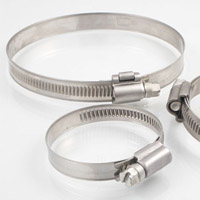
The gas connection hose connects the stove, stove or hob to the mains gas supply or gas cylinder. After several years of use, it wears out and must be changed.
There are two signs that indicate that the hose needs to be changed: either the use-by date printed on the hose has expired (useful life between 5 and 10 years), or the hose shows various signs of wear (blows, burns, cuts).
Choosing the gas hose
Before buying the equipment to change the hose, you should know that you will have to choose a hose adapted to the type of gas you use: either a blue hose for natural gas or an orange hose for butane or propane. Once you have identified the colour, you can choose between :
• a stainless steel braided hose (unlimited lifespan / complies with NF D 36-121 standard)
• a rubber hose with textile reinforcement (service life 10 years / conforms to the NF D 36-103 standard / cheaper).
The equipment
For this operation, you will need: the new hose, a flat-blade screwdriver, a stainless steel clamp and Vaseline.
Steps for changing the gas hose
• Empty the gas left in the gas supply line of the cooker and in the hose to be changed. To do this, light one of the burners, open the window, shut off the gas supply to the meter and wait for the burner to go out.
• Unscrew the hose clip in order to remove the hose. If it resists, cut the rubber with a cutter.
• Screw the new flexible tube onto the tap if it has a thread. If not, use the new hose clamp to secure it. The clamp and the hose must be of the same size and quality. You can use Vaseline to make installation easier.
• Make sure there are no leaks by pouring a little washing-up liquid on the fitting. If there are bubbles, the hose is loose. In this case, tighten the coupling with a wrench and pour dishwashing liquid again. If there are no more bubbles, the hose is securely attached. The connection is made!


